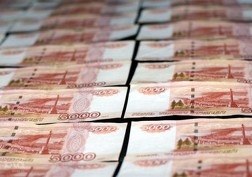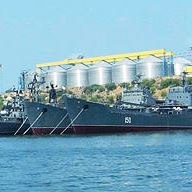The "Eastern Promises" seminar at the Lithuanian Embassy in Brussels a few days ago started like a detective story: the Ukrainian security services detained at the airport Vasil Filipchuk, senior advisor at the International Center for Policy Studies in Kyiv, in order to prevent him from participating. How curious. Is there a terrible truth about the Yanukovych regime that they're hiding from the EU?
In Brussels, the irritation about the Eurasian Union is enormous. "Putin's project is an elephant in the room,” one of the participants said. But, apart from all the emotions, there is a clear policy rationale in the anti-Putin discourse in Europe: the Kremlin-promoted idea of spheres of influence for many is incompatible with democracy, since it leads to the dependence of rulers like Yanukovych on "the elephant" rather than on his own people.
Yet the debate is of course not only about norms, but also about pragmatic outcomes, As Svante Cornell, director of the Central Asia-Caucasus Institute at John Hopkins University presumed, there are only two scenarios to solve the frozen conflicts provoked by separatism. One option would be to surrender to Russian demands and integrate with Russian institutions (Moldova with Transnistria, Georgia with Abkhazia and South Ossetia). Another scenario would be to keep institutionally attaching Moldova and Georgia to the European normative order, and incite the breakaway territories to look in the same direction. This is what is happening in the Western Balkans where both Serbia and Kosovo might ultimately have a chance to find their places in an enlarged EU.
This is exactly what Martin Sieg, foreign policy advisor to the CDU/CSU in the Germany Bundestag, considers as the most effective way out for the conflict in Transnistria. Seventy-percent of all exports of this territory go to Moldova and the EU, yet under the present conditions Tiraspol can't partake of the Deep and Comprehensive Free Trade Area (DCFTA). The EU wants Moldova to take care of economic transformation in Transnistria, which either accepts this offer and thus turn to the EU, or would face a need to keep asking for economic sponsorship from Moscow.
This raised an important question: who pays (and will pay) for the ambitions of breakaway territories to go independent, in human lives and in financial resources? Political strategies of separatist units from the very beginning were based on the idea of their victimization, but we also need to know how economically viable they are. Are they able, for example, to pay for their gas consumption? If they choose to rely mostly on external support, the key question is whether this reliance might be detrimental for this external country in terms of its relations with more important international actors.
These questions also relate to Nagorno-Karabakh. From the Armenian perspective, buffer zones in Nagorno-Karabakh are only consequences of the conflict, and it does not make sense to address them. Yet does this mean that everything that is going on in the territory can be justified as effects of a bygone war? Some in Armenia want to come back to discussing the status of Nagorno-Karabakh within Azerbaijan during the Soviet times, but that would be an equivalent of revising the belongingness of Crimea to Ukraine—an argument used by many Russian nationalists.
Informal conversation with Armenian diplomats gave a blurred picture: they failed to clearly identify Russian interests in supporting this country militarily and economically, preferring simply to take it for granted that there should be some interests since Russian troops are there. On the question of the price for independence, they claimed that since many locals died in Karabakh two and a half decades ago, Armenians have already paid their price. Whether Russia has to pay its own, remains unanswered.
As the case of Ukraine shows, Moscow is ready to disburse money for economically questionable, yet politically salient purposes. The EU is not, which adds one more point to the list of drastic differences between Moscow and Brussels. Yet this also makes clear how the effects of Color Revolutions differ from the demise of socialist regimes in Eastern Europe in 1989/1991: what used to be an absolutely normative agenda two-and-a-half decades ago turned into a rather material issue for all parties involved.










